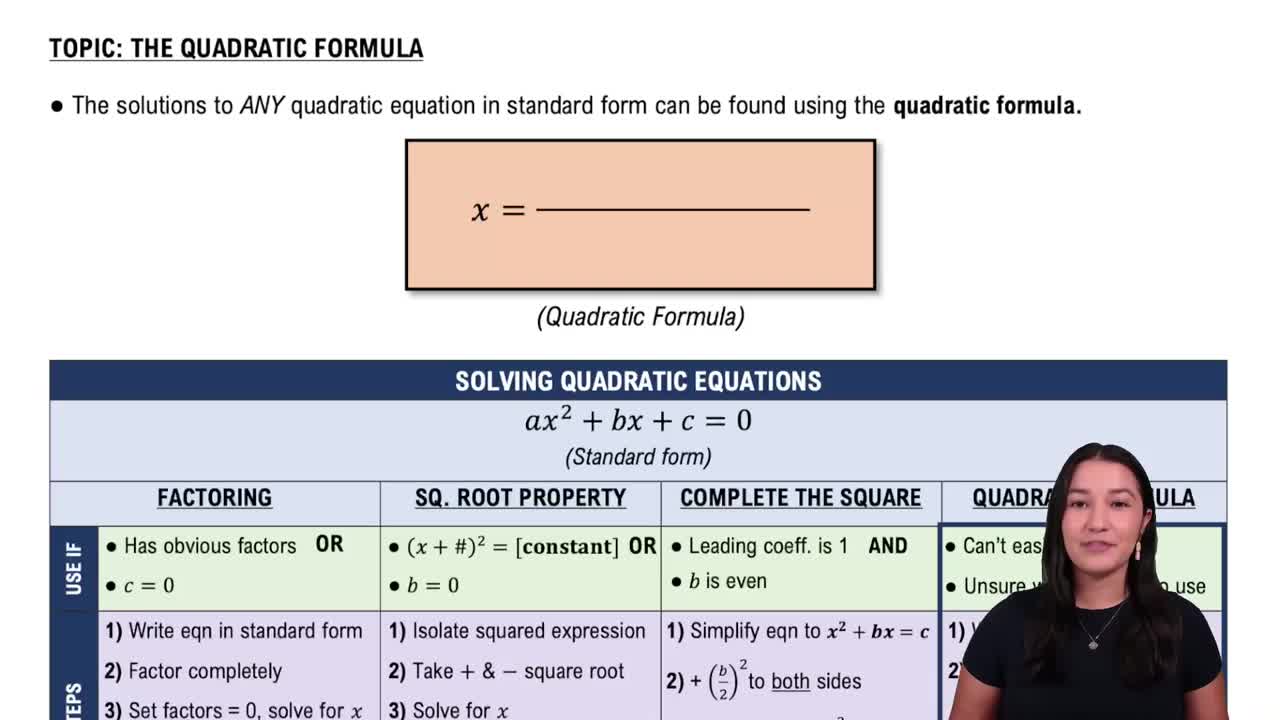Here are the essential concepts you must grasp in order to answer the question correctly.
Quadratic Functions
A quadratic function is a polynomial function of degree two, typically expressed in the form f(x) = ax² + bx + c. The graph of a quadratic function is a parabola, which opens upwards if 'a' is positive and downwards if 'a' is negative. Understanding the basic shape and properties of the standard quadratic function, f(x) = x², is essential for applying transformations.
Recommended video:
Solving Quadratic Equations Using The Quadratic Formula
Graph Transformations
Graph transformations involve shifting, reflecting, stretching, or compressing the graph of a function. For the function h(x) = -(x - 2)², the transformations include a horizontal shift to the right by 2 units and a reflection across the x-axis due to the negative sign. Recognizing these transformations allows for the accurate graphing of modified functions based on the standard form.
Recommended video:
Vertex of a Parabola
The vertex of a parabola is the highest or lowest point on its graph, depending on the direction it opens. For the function h(x) = -(x - 2)², the vertex can be identified as the point (2, 0), which is derived from the transformations applied to the standard quadratic function. Understanding the vertex is crucial for accurately plotting the graph and analyzing the function's behavior.
Recommended video:
 Verified step by step guidance
Verified step by step guidance Verified Solution
Verified Solution



 5:57m
5:57m